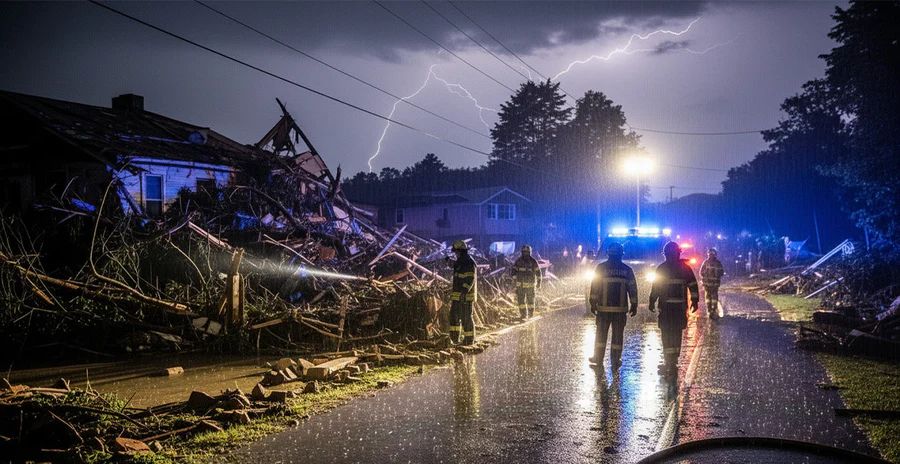NightRide: How Thermal Imaging Is Revolutionizing Natural Disaster Response
)
It’s 3 a.m. The power is out. Roads are underwater. A rescue team rolls into a flooded neighborhood, headlights barely cutting through the storm. Beyond that, only darkness. This is the reality of natural disasters: chaotic, dangerous, and unpredictable. First responders must act fast despite smoke, debris, collapsed buildings, and near-zero visibility. That’s where thermal cameras come in.
At NightRide, we build vehicle-mounted thermal cameras that track heat signatures even in the harshest conditions, helping rescuers see when every second counts.
The Rising Disaster Challenge
Climate-driven disasters are escalating. NOAA’s 2024 report recorded 27 separate billion-dollar weather events costing $182.7 billion and claiming 568 lives. Beyond headline hurricanes like Helene ($78.7B) and Milton ($34.3B), disasters ranged from severe storms and wildfires to floods and droughts. The trend is clear: the scale of devastation is climbing.
How Thermal Tech Helps
-
Search & Rescue: Victims hidden under rubble, floods, or smoke are nearly impossible to spot with the naked eye. Thermal imagers detect body heat, allowing teams to locate unconscious or trapped individuals.
-
Wildfire Response: In 2024, wildfires scorched 8.8 million acres, 26% above the 20-year average. Thermal cameras reveal invisible hotspots, track fire lines, and spot embers that threaten flare-ups. Mounted on rigs, they let crews navigate smoke without leaving vehicles, reducing risk.
-
Flood Rescues: Floodwaters mask collapsed roads, submerged cars, and hidden power lines. Thermal-equipped vehicles can detect survivors, identify heat from trapped vehicles, and through dangerous terrain.
-
Infrastructure Checks: Thermal systems detect smoldering debris, overheated transformers, and water-damaged equipment, helping utilities prevent secondary failures and restore services faster.
-
Command & Coordination: Integrated feeds stream thermal video to dashboards and command centers, enabling better decisions and avoiding wasted sweeps.
Why NightRide Fits the Mission
-
Vehicle-Mounted: Fast installs on trucks, ATVs, boats, and SUVs.
-
Rugged & Weatherproof: Built for rain, dust, extreme heat, and smoke.
-
High-Resolution Sensors: Detect heat signature hundreds of yards away.
-
Real-Time Output: Stream to vehicles, mobile devices, or command centers.
-
Scalable & Cost-Effective: Fits budgets of both major agencies and volunteer squads.
Future-Proofing Response
With 2024 among the four warmest years on record, disaster risk is accelerating. Agencies equipped with thermal imaging gain faster rescues, safer firefighting, efficient flood missions, accurate infrastructure assessments, and seamless team coordination.
Conclusion
Natural disasters aren’t slowing down and neither can our response. Thermal imaging isn’t just technology; it’s a frontline defense that saves lives, protects responders, and accelerates recovery.
At NightRide, our mission is clear: empower responders to act decisively, when every second counts.

Ready to upgrade your disaster response?
Explore NightRide’s lineup of vehicle-mounted thermal cameras or connect with our team to find the best system for your agency.


